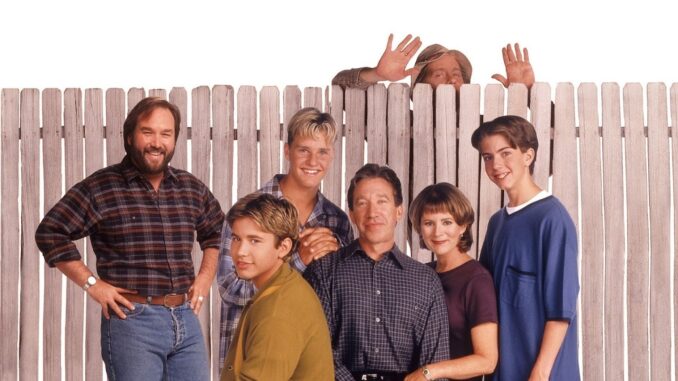
The sitcom Home Improvement was a staple of ’90s television, drawing millions of viewers each week with its mix of humor, heart, and relatable family dynamics. With Tim Allen‘s iconic grunts, Wilson the wise neighbor peering over his fence, and Jonathan Taylor Thomas in full ’90s heartthrob mode as the charming middle child, the show became a cultural touchstone. However, behind the scenes, one woman was holding it all together — Patricia Richardson, who played the show’s matriarch Jill Taylor.
Richardson recently opened up about her experience on the show and how the gender pay gap played a pivotal role in the show’s somewhat abrupt ending. “When I took the job, they said it wasn’t meant to be the Tim Allen show. It was meant to be our show,” Richardson noted in an interview with the Los Angeles Times, adding, “I’ve always said, I don’t want to play the thankless wife.”

This sentiment was echoed by series writer and co-executive producer Rosalind Moore, who praised Richardson’s resilience: “Pat was the only woman down on that set almost all of the time, and I was very often the only woman writer in the room. When she was surrounded by all that testosterone, she would still hold her ground. There were times when she said, ‘You know what? I have three kids. I wouldn’t say this to my children.’ And she was always right. She always made it better.”
As Home Improvement entered its third season, Richardson renegotiated her contract to include four Jill-centric episodes per season and a share of the series’ profits. “I knew that residuals just get less and less, and I felt that I am going to end up being a huge part of whatever this show is,” she said. “It’s going to work because of me almost as much as because of Tim.”
Despite her contributions, the pay disparity between Richardson and Allen remained stark. By the eighth season, Richardson decided it was time to move on. “I told everybody, there’s not enough money in the world to get me to do a ninth year. This show is over. It needs to end,” she recalled. But then came a surprise offer: $1 million per episode for her and $2 million per episode for Allen to return for a ninth season. While Allen agreed, Richardson stood firm. “All I really care about is having enough money to live on, get my kids to college and leave them some. I don’t need a plane. I don’t need a boat,” she remarked.
“I knew that Disney would in no way pay me that much. That was my way to say ‘no’ and was a little bit of a flip-off to Disney,” she explained. “I’d been there all this time, and they never even paid me a third of what Tim was making, and I was working my ass off. I was a big reason why women were watching.”

Ultimately, the show ended, unable to continue without her. “Some shows would have had the mom die,” Finestra reflected. “I don’t remember one discussion where we said, ‘How can we keep this going without Pat?’ It just couldn’t have worked.” Producer Bruce Shoenman agreed: “Without her, it just didn’t make any sense.”
In the end, Richardson’s decision to prioritize fairness and equity over an inflated paycheck is a powerful testament to her character. As she put it, “I was mad at Tim because he was leaving me alone being the only person saying no, which made me feel terrible and like the bad guy,” Richardson shared, “and he was upset with me for leaving.”
Her choice serves as a reminder of the challenges that actresses face in Hollywood, often having to make tough decisions to gain the respect afforded to their male counterparts. While we can hope that future generations of actresses won’t have to make such sacrifices to be respected, there is still a long way to go in terms of pay equality in Hollywood.
